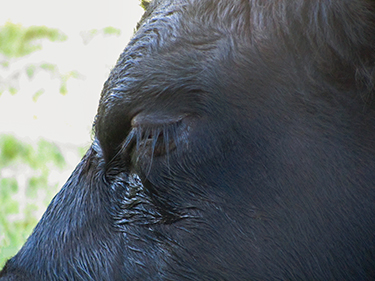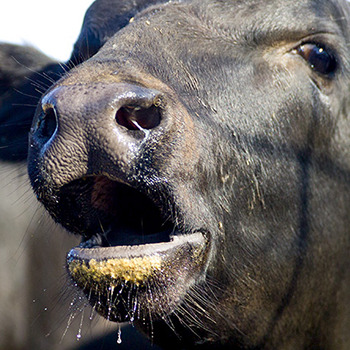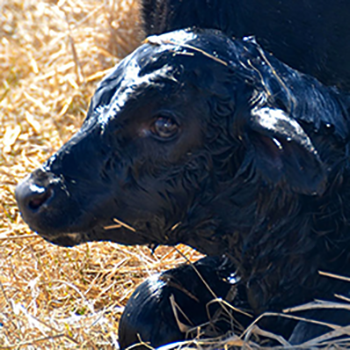IBR Can Cause Eye Problems
A ‘pinkeye infection’ is not always caused by bacteria or irritants.
Sometimes producers experience what appears to be a pinkeye outbreak in a group of yearlings, but the animals don’t respond to antibiotic treatment. Or, they may see cases of pinkeye in the wintertime when there are no flies. This can be frustrating, and may also indicate the problem is not a bacterial pinkeye infection at all. It might be an infectious bovine rhinotracheitis (IBR) problem.
 |
IBR is a highly contagious viral infection caused by bovine herpesvirus-1 (BHV-1). It generally causes acute upper respiratory tract disease and can cause reproductive problems and abortions, but this virus can also cause conjunctivitis, runny eyes and corneal ulcers. [Photo courtesy Heather Smith Thomas] |
IBR is a highly contagious viral infection caused by bovine herpesvirus-1 (BHV-1). It generally causes acute upper respiratory tract disease and can cause reproductive problems and abortions, but this virus can also cause conjunctivitis, runny eyes and corneal ulcers.
As with many herpes infections, after the animal recovers from the initial infection, the body never fully rids itself of the virus. It hides in certain cells and remains as a lifelong latent infection. Just like shingles in humans, the virus can begin to multiply again when the body’s defenses are compromised during times of stress. Whether or not the animal shows signs of disease, it can shed the virus from the nose via nasal discharge and from the eyes in tears to infect other cattle.
Chris Chase, a professor in the Department of Veterinary and Biomedical Sciences at South Dakota State University, says that when this virus causes conjunctivitis and runny eyes, people often mistake it for bacterial pinkeye, and it may contribute to pinkeye.
“We are seeing more of this, especially in young cattle in a feedyard, looking like a chronic pinkeye problem. This virus by itself can cause herpetic keratitis, which can also occur in humans. It infects the cornea and causes an ulcer. These ulcers usually heal, but can be recurrent,” explains Chase.
Because it is a virus, antibiotics don’t help.
There are several bacteria that can cause pinkeye, including Moraxella bovis and Moraxella bovoculi. Even within Moraxella bovis there are many different strains.
“There are some vaccines for pinkeye, but an injectable vaccine does not do a very good job of protecting against infections in the eye. We haven’t come up with any adjuvants that help target the eye,” Chase says. “For pinkeye prevention, I’d want to use an intranasal vaccine that gives more systemic protection. The temperature-sensitive (TS) BHV-1 vaccines don’t grow that well, and their ability to create immunity in other parts of the body are not as great, so they may not protect the eye from a herpes infection.
“The intranasal TS vaccines do fine to create immunity in the upper nasal tract to protect against IBR, but because they are so limited in how they grow, they don’t do much for the eye or other places in the body,” he continues. “They can limit the replication and give good local protection in the nasal cavity, but they don’t give systemic protection like a vaccine like Nasalgen®, which goes a bit deeper. In general, gaining pinkeye protection has been frustrating because it can be started off by viruses like BHV-1 or bacteria, or simply irritants like grass awns or flies,” he says.
Editor’s note: Heather Smith Thomas is a freelance writer and a cattlewoman from Salmon, Idaho.







